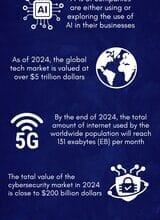In the highly digitalized era, traditional methods of business transactions, particularly involving payments, have undergone extensive transformations. There has been a shift from postal methods to electronic systems, enhancing efficiency and accessibility. This article probes into the innovative approaches to sending payments: a journey from postal to digital, how digital payment systems operate, their merits and drawbacks, and what the future holds for business transactions.
From Postal to Digital: The Evolution in Payment Systems
Bygone are the days of waiting anxiously for checks to arrive by mail. The evolution from postal to digital payments started with the birth of the internet, sparking a significant change in payment processing methods. The transition turned out to be enormously beneficial, boosting transaction speed, cutting down on physical materials and costs associated with postal mail, and further enriching the overall user experience.
This advancement hence took the form of digital payment systems – Electronic transfers, Electronic Data Interchange (EDI), and Automated Clearing House (ACH) payments, to name a few. Businesses now could manage their finances virtually and in real-time, providing an effortless means to pay and get paid.
The Growth of Digital Payments: Examining the Numbers
The popularity of digital payment systems has soared over the past decade. According to a Forbes report, electronic payments had outpaced cash payments globally by 2016. Furthermore, a Statista study reveals that digital payments are projected to hit a whopping total transaction value of US$ 6,685,102m by 2021.
The rise in fintech investments, surge in e-commerce, and a global inclination towards cashless societies, have all acted as catalysts boosting this impressive growth trajectory. They have also triggered a surge in competition, leading to constant improvements and enhancements.
How Digital Payment Systems Work: An Insight
Digital payment systems have brought about swift and easy transactions. But how do they work? Essentially, these systems act as intermediaries, ensuring a smooth transfer of funds from the payer to the payee’s account. They operate primarily on an electronic platform, often requiring internet access, and ensure secure, quick around-the-clock transactions.
A typical electronic transaction involves three entities: the payer, the payment gateway, and the payee’s bank. The payer initiates payment via digital wallets, credit/debit cards or net banking. The payment gateway authenticates the transaction, and the amount gets debited from the payer’s account, and credited to the payee’s. The systems follow an assured security protocol to prevent fraudulent activities.
Advantages and Disadvantages of Streamlining Payments Digitally
Digital payment systems come bundled with heaps of advantages. These include: instant transactions, 24/7 accessibility, cost-effectiveness, eco-friendliness, transaction traceability, and increased security measures against theft and fraud. To enumerate in a more organized way, digital payments allow:
- Speed and convenience: Fast, hassle-free transactions that can be conducted anywhere, anytime.
- Traceability: Digital records help to easily track and monitor the transaction history.
- Security: Strong authentication processes reduce the risk of fraud and theft.
On the flip side, digital payments can have certain drawbacks. These may include dependency on internet access, occasional technical glitches, and data breaches. However, given their extensive benefits, these challenges are constantly being addressed with stricter regulations, enhanced security, and relentless technological advancements.
Future of Business Transactions: The Way Forward
The future of digital transactions looks promising indeed. As per a PWC report, mobile payments alone are estimated to reach $274.4 billion by 2021. Digital wallets, real-time payments, and emerging technologies like blockchain and AI are paving the way towards more advanced, secure, and convenient digital payment systems.
Apart from technological advancements, regulatory reforms and consumer behavior will contribute significantly to the future landscape of digital transactions. Consequently, businesses need to stay updated and be ready to accommodate these changes to stay competitive.
In summary, the transition from postal to digital payment systems has revolutionized the world of business transactions, ensuring speed, convenience, and security. Despite a few potential drawbacks, the technological advancements and increased adaptability are continually catering to these challenges. As businesses are stepping into the future of digital transactions, the need for trustworthy and efficient digital payment solutions is paramount.
Meet the future of payment transactions – Online Check Writer. This pioneering software offers a comprehensive platform, integrated with over 22k banks, while effectively managing multiple accounts in one place. The service stands out by offering instant payments with zero transaction fees, and a secure, user-friendly platform. Companies can reduce transaction costs significantly using Online Check Writer’s low-cost ACH feature. Versatility is another advantage; make transactions through printed or digital checks, ACH, direct deposit, RTP, and much more. You can even effortlessly import data from platforms like QuickBooks, Excel, Zoho, Gusto, ADP, and Bitpay.
Trusted by over 1 million users, this software has effectively processed over 20 billion dollars in transactions in the past few years. It has been voted as the best check printing software overall in 2021 by Investopedia, and it holds the #1 position in the QuickBooks app store. Isn’t it time you upgrade your business transactions to the digital era as well? Don’t wait to enjoy the simplicity and security of Online Check Writer, sign up now and streamline your business transactions effectively.
Don’t miss our latest Startup guide: Advantages of Switching to Electronic Payment Methods from Postal Checks



